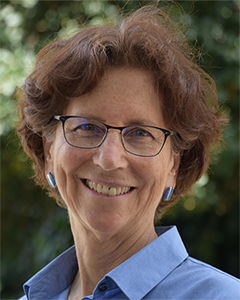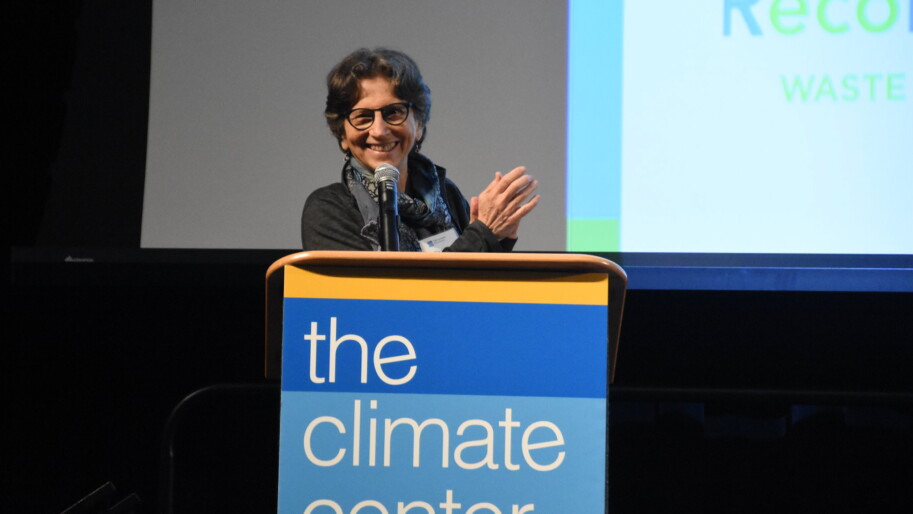On April 25, 2022, the Assembly Natural Resources Committee voted 7-3 to advance the Natural Carbon Sequestration and Resilience Act (AB 2649, C. Garcia). AB 2649 will make California the first state in the nation to set statutory goals for naturally removing past climate pollution from the atmosphere, while also making the state more resilient to heat extremes, drought, wildfires, and other climate impacts.
The following is a transcript of testimony given to the Committee by The Climate Center’s Ellie Cohen and the California Association of Resource Conservation Districts’ Karen Buhr.
Testimony from Ellie Cohen, CEO, The Climate Center:
Good afternoon, Chair Rivas and committee members. My name is Ellie Cohen, CEO of The Climate Center. I am honored to testify in support of AB 2649, which will set in statute urgently needed state goals for naturally removing carbon from the atmosphere.
Recent UN climate science reports make it clear: the window of opportunity to secure a livable future is quickly closing. No temperature rise is safe.
According to the latest science, unless we act boldly today, California will be increasingly devastated by greater extremes, including severe heat and drought that already threaten our forests and will threaten the viability of many of our crops as early as 2027.
Per the science, we must cut fossil fuel use in half by 2030 and begin removing carbon pollution we’ve already put in our atmosphere to have a shot at securing a stable climate.
To remove legacy carbon pollution from the atmosphere, the state must scale up proven, cost-effective natural carbon sequestration practices like composting food waste and applying compost to soils, planting cover crops, greening urban areas and restoring habitats. These approaches produce win-win outcomes that increase water and food security, reduce pollution and heat impacts, protect farmworkers, create new jobs, and help us adapt to worsening climate impacts.
Carbon capture and storage (CCS) technology is sometimes confused with removing carbon from the atmosphere. CCS works at the smokestack or point source. It’s been used for decades and repeatedly found to be ineffective, expensive, and polluting, especially in frontline communities of color. And it’s almost always used to produce more fossil fuels, guaranteed to be emitted from end users’ smokestacks or tailpipes.
We also can’t rely on technological Direct Air Capture, which is still in its infancy and not yet scalable.
Only natural carbon removal — which is proven, environmentally sound, and just — can cost-effectively draw down past carbon emissions at scale starting this decade with multiple co-benefits for our communities, environment, and economy.
AB 2649 is supported by 66 organizations. We urge you to vote yes on the Natural Carbon Sequestration and Resilience Act, an essential step toward securing a vibrant, healthy, climate-safe future for all.
Testimony from Karen Buhr, Executive Director, California Association of Resource Conservation Districts:
Thanks for your time in hearing this important bill. There are 95 Resource Conservation Districts (RCD) in California that sit at the intersection of natural resource conservation and resilience, agriculture, private landowners, and community.
RCDs provide on-the-ground support to communities and community members that are trying to implement climate-smart practices and build resilience to the impact of climate change, including support to farmers and ranchers implementing soil health and climate-smart practices, wetland restoration projects, protecting native species, and recovering their habitats, and helping landowners in forested areas maintain their properties for forest health and fire safety.
While there are many natural and working lands practices that help sequester carbon, I am going to focus on a set of climate-smart agricultural practices that sequester carbon in soils. Cover cropping, no-till, reduced-till, mulching, compost application, and conservation plantings all can increase the ability of soils to sequester additional carbon. Further, in many cases, these practices can actually save farmers and ranchers money in irrigation costs, fertilizer inputs, tilling costs, and pesticide applications. Not to mention the multiple benefits to the environment that come from reducing those inputs.
RCDs with their partners at the Carbon Cycle Institute and Natural Resource Conservation Service have helped to create a carbon farm plan process that guides farmers and ranchers through specific practices that can sequester carbon and reduce environmental impact in a quantifiable way. These plans tell farmers how much carbon they can sequester with each practice and the environmental impact of making those changes. Then they make an educated decision about practice changes. Over the last 5 years, the RCDs have been training farmers, generating interest in and writing Carbon Farm Plans.
RCDs across the State have completed plans for 137 farmers and ranchers covering 71,440 total acres that, at full implementation, will sequester 1.8 million (1,793,029.30) tons of CO2e (at year 20). The RCDs have 100 plans in progress, and a long waitlist of producers ready to participate.
Once the farmer or rancher decides to implement a new practice, they need help in knowing how to apply that practice to their specific property, have questions about maintaining the productivity of their crop, and want to be walked through the application. If things don’t go as expected, they need someone to help guide them in making adjustments. RCDs are there to help guide them through each step so that practices can be implemented effectively, but technical support is underfunded and under-available.
By setting an ambitious goal for natural carbon sequestration, AB 2649 would help incentivize and encourage the implementation of practices and would support RCDs and other entities that help farmers, ranchers, and communities across the state in being able to provide effective support in implementing practices. AB 2649 will push the state forward in our fight against climate change and build resilience to its impacts while providing a number of co-benefits for the environment and communities.
For all of these reasons, CARCD on behalf of our member districts urges an aye vote on AB 2649.


